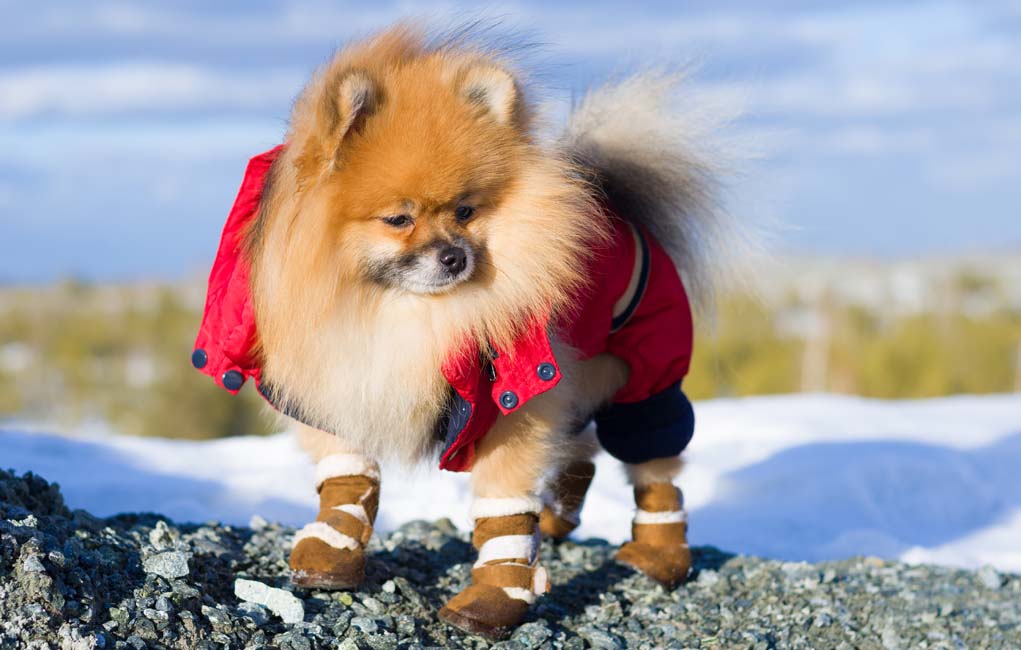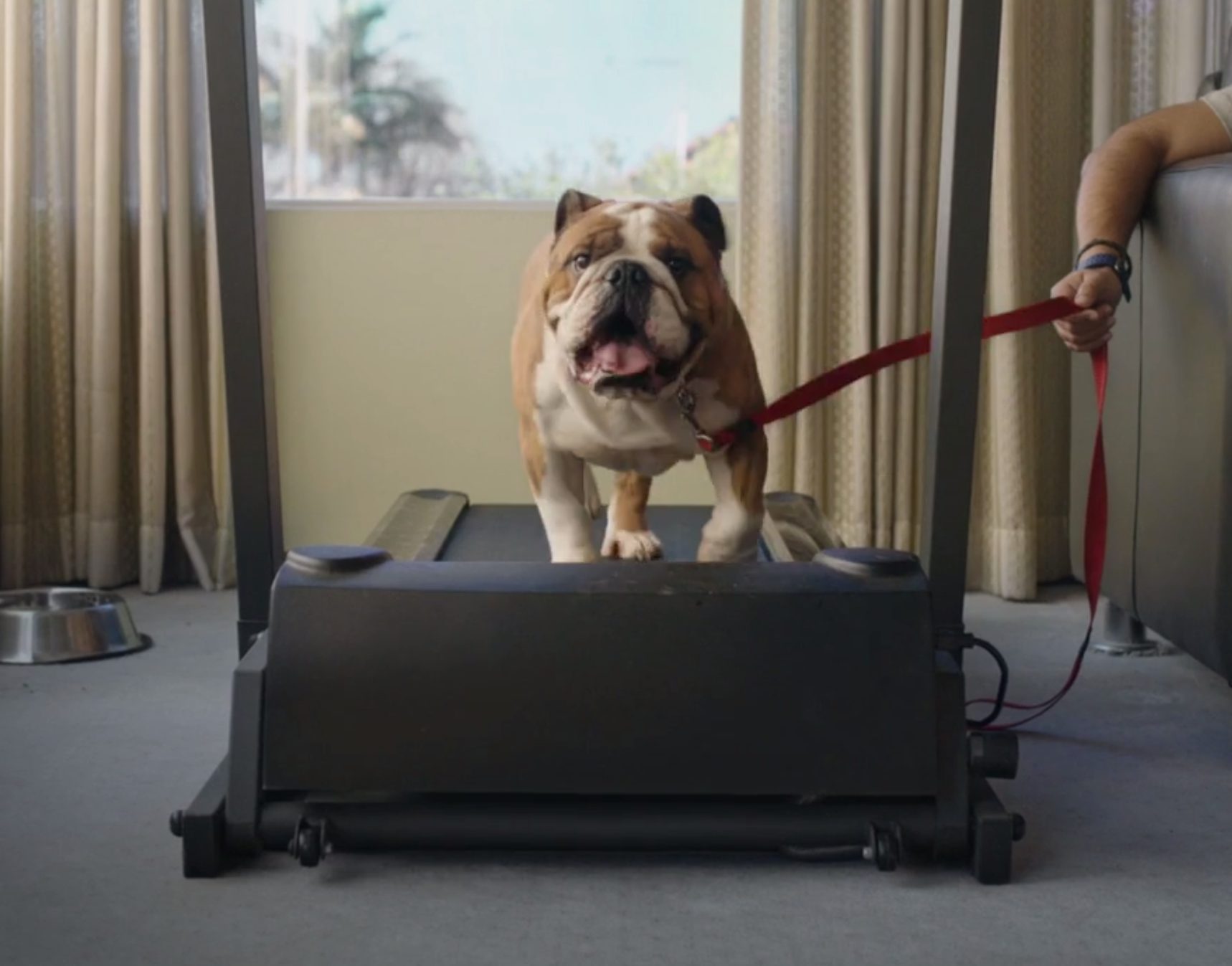The Dangers of Heavy Precipitation:
Besides simply being unpleasant to be in, heavy precipitation can cause large amounts of water, snow, and/or ice to build-up on the sidewalk. This leads to outdoor walking conditions becoming more dangerous due to an increased risk of slipping. It doesn't help that keeping your balance on a slippery ground becomes much more challenging when walking a dog!
Another danger that heavy precipitation brings, whether it be heavy snow or heavy rain, is reduced visibility: this can make it more difficult for drivers to see both people and dogs on the road, especially at night. And in the winter, heavy precipitation can come with cold temperatures, which increases the risk of hypothermia and frostbite in both humans and dogs.

(Photo by Thomas Temple from DailymailLinks to an external site.; image captured 2018-03-19)
Lastly, a lesser-known hazard that heavy precipitation (specifically, heavy snow) creates is the salt and de-icers that are used to prevent ice from building up on roads and sidewalks. These are practically a necessity for preventing the risk of slipping; however, both salt and de-icers (which often contain chemicals harmful to dogs) can cause a dog's feet to develop chemical burns if walked on. They become an even greater hazard if ingested by the dog, which can happen if the dog licks its paws after walking on a treated sidewalk.
Additionally, antifreeze (used in cars to prevent radiators from freezing) spills occasionally occur on sidewalks and roads. Antifreeze contains ethylene glycol, which is extremely poisonous to dogs if ingested (even small amounts can be lethal!). Unforturnately, most antifreeze have a sweet taste which is attractive to animals, so dogs licking antifreeze off the ground is a strong possibility.

(Photo from Leesburg Veterinary HospitalLinks to an external site.; photo captured 2018-04-04)
How to Minimize the Hazards brought by Heavy Precipitation:
If the heavy precipitation is accompanied by cold temperatures, then dogs with short fur, thin fur, medical issues, that are of old age, or that are small may benefit from a coat or sweater during the walk; waterproof would be an added bonus so that the dog can stay dry (if a dog's fur becomes wet, freezing temperatures could cause it to subsequently freeze).
Dogs that have thick or dense fur, or breeds accustomed to colder weather, will most likely not need to wear a coat in these cases. However, this depends on the exact situation, so make sure to pay attention to the dog's reactions. If they are shivering, then they are probably cold.

(Image by Th0rHere from ImgurLinks to an external site.; image captured 2018-03-16)
Because of the dangers of salt and de-icers to dogs, it is recommended to walk dogs away from roads and sidewalks that have been heavily treated with them. Furthermore, to prevent dogs from ingesting any salt or chemicals that may get on their paws, their paws should be cleaned with warm water or baby wipes immediately after a walk.
Another way to prevent a dog from ingesting chemicals on their paws would be to have them wear dog shoes to avoid the issue altogether. Alternatively, protective balms can be applied to a dog's pads before going on a walk, and then washed off immediately afterwards.
Finally, a strong effort should be made to prevent dogs from licking the ground outside, especially on roads or driveways, where antifreeze spills are most likely to be found.

(Photo by James Rhys Clarke from TopDogTipsLinks to an external site.; image captured 2018-03-19)
When Heavy Precipitation is Most Likely to Occur:
Heavy precipitation is most likely to occur when:
-
A low pressure system is in the area: Low pressure systems are associated with bringing heavy precipitation due to the rising of warm air at their centers.
-
A front is passing over the area: Since fronts are generally associated with low pressure systems, the two are likely to be seen together. Cold fronts generally bring a narrow band of moderate-heavy precipitation, while warm fronts generally bring a gradual onset of light precipitation. Outdoor walks should be avoided when cold fronts are passing over the area.
- Cumulus congestus or cumulonimbus clouds are in the area: Cumulus congestus clouds indicate heavy precipitation and strong winds, while cumulonimbus clouds indicate thunderstorms. It's not advisable to walk outdoors in such conditions.
If there is currently heavy precipitation at a location where you want to walk your dog, then the best solution is to simply have the walk in a different location (such as an outdoor location that has less precipitation, or a dog-friendly place indoors). Alternatively, a different exercise could be done indoors if limited space does not permit walking; examples include walking the dog on a treadmill, running up and down stairs, or setting up obstacle courses. Don't skip the exercise altogether! It is essential for dogs to receive their daily exercise.

(Photo by Peter AlanLinks to an external site.; photo captured 2018-04-04)
 icons at the top right corner of the subsection.
icons at the top right corner of the subsection.